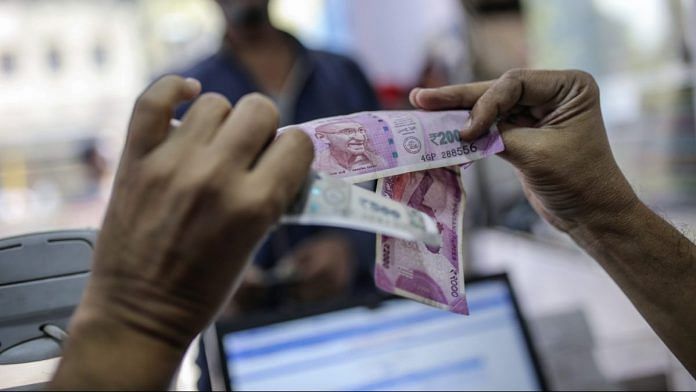A fine print reading of 2019 budget shows off-budget borrowings are on the rise. ThePrint takes a look at what that means.
New Delhi: In the Union budget presented by Finance Minister Piyush Goyal on 1 February, India’s fiscal deficit was shown to have slipped marginally to 3.4 per cent of gross domestic product in 2018-19, as against the initially budgeted 3.3 per cent.
But a fine print reading of the budget documents showed that off-budget borrowings are on the rise, leading economists to point out that though the fiscal deficit may be contained, the effective deficit is much higher.
ThePrint takes a look at what is off-budget borrowing and where has it been utilised by the government.
Also read: Modi’s election handouts threaten plan to curb fiscal deficit
What is off-budget borrowing?
Off-budget borrowings are those borrowings by state-owned firms that are not part of the official budget calculations but are used to fund government schemes.
An off-budget borrowing is excluded from the fiscal deficit calculations though it does add to the total debt of the government.
Why the rise
Election-year spending pressures as well as revenue slippages on account of the slow growth of goods and services tax (GST) collections have constrained government finances. However, the government still needs to meet the funding requirements of state-owned enterprises implementing government schemes.
This has resulted in an increased usage of off-budget borrowings — also known as extra budgetary resources.
“Extra budgetary resources are those financial liabilities that are raised by Public Sector Undertakings for which repayment of entire principal and interest is done from Government budget,” explains the budget document.
They are not accounted for in the current budget because they are future liabilities and not current liabilities.
The practice of increased use of off-budget financing by the government was earlier flagged by the Comptroller and Auditor General of India (CAG) as well.
In a report submitted last month for the year 2016-17, the CAG had raised concerns on how off-budget financing are not part of the calculation of the fiscal indicators despite fiscal implications.
Also read: Modi govt signals it’s ready to sacrifice fiscal discipline to stoke economic growth
Recent instances of off-budget borrowing
In the recent budget, economists have flagged the huge rise in off-budget borrowings by the Food Corporation of India (FCI).
FCI, the agency which administers India’s Food Security Act, will raise Rs 1.96 lakh crore through extra budgetary resources according to the revised 2018-19 numbers, as against an initially budgeted amount of only Rs 71,995 crore.
In 2019-20, it is estimated to raise Rs 1.76 lakh crore through this route.
National Highways Authority of India, National Bank of Agriculture and Rural development, Rural Electrification Corporation, Power Grid Corporation of India and NTPC Ltd are some of the other state owned firms that have raised or will raise funds through this route in 2018-19 and in 2019-20.
Calling off-budget borrowing an understatement of public account liability, the CAG had said, “Government has increasingly resorted to off-budget financing for revenue as well as capital spending. In terms of revenue spending, off-budget financing was used for covering deferring fertilizer arrears/bills through special banking arrangements; food subsidy bills/arrears of FCI through borrowings and for implementation of irrigation scheme (AIBP) through borrowings by NABARD under the Long Term Irrigation Fund (LTIF).
“In terms of capital expenditure, off budget financing of railway projects through borrowings of the IRFC and financing of power projects through the PFC are outside the budgetary control,” it added.







Whether or not this should be treated as a part of the fiscal deficit is a matter of judgment. However, a summation of all such borrowings should be furnished by the government itself. Money borrowed for roads and railways – with an Operating Ratio of 110 – is going to give us a bumpy ride.